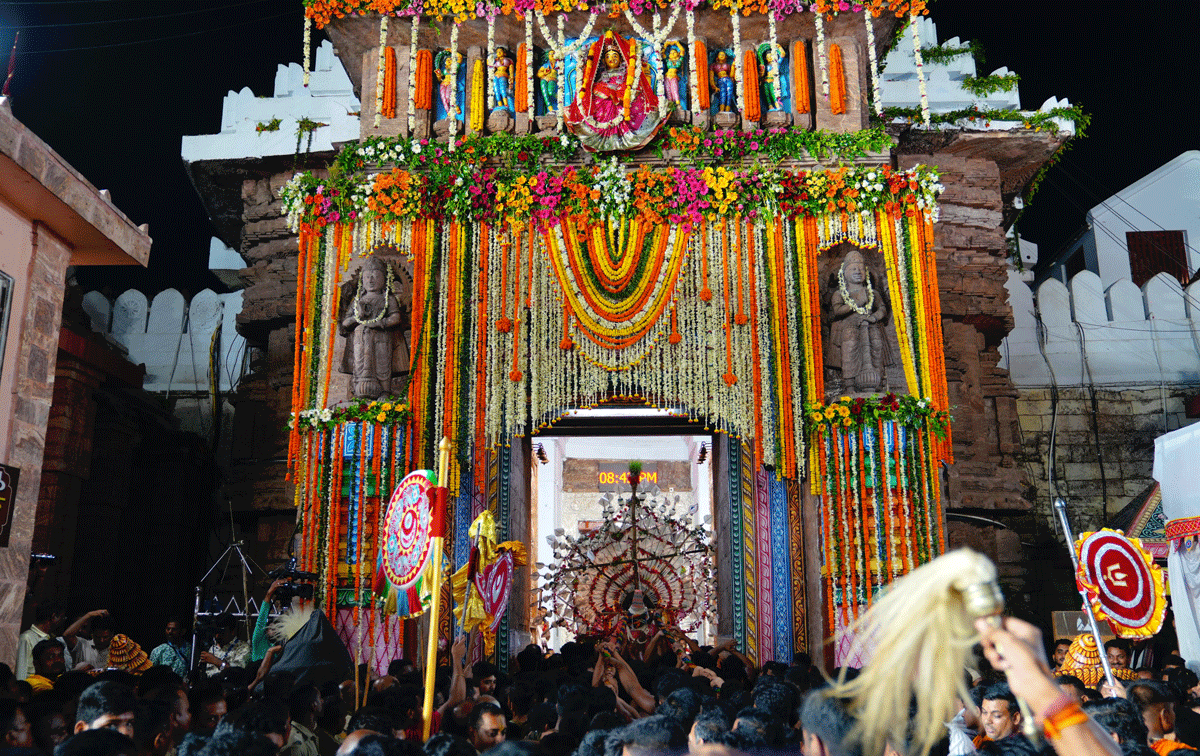Puri: The nine-day long Car Festival, the globally renowned Puri Rath Jatra, has officially drawn to a close with the sacred ritual of Niladri Bije.
This deeply significant ceremony marks the triumphant return of Lord Jagannath, his elder brother Lord Balabhadra, and their sister Devi Subhadra to their divine abode, the Puri Srimandir, after their annual sojourn to the Shree Gundicha Temple.
For devotees, Niladri Bije is not just the end of a grand festival, but a profound expression of divine love, human emotions, and the rich tapestry of Odia culture.
The 2025 Rath Yatra officially began on Friday, June 27, 2025, on the Dwitiya Tithi (second day) of the Shukla Paksha in the Ashadha month of the Hindu calendar. After the preparatory rituals of Snana Purnima (ceremonial bathing) and Anavasara (a period of seclusion for the deities believed to be recovering from their bath), the deities emerged for the grand procession.
The magnificent chariots — Nandighosha for Lord Jagannath, Taladhwaja for Lord Balabhadra, and Darpadalana for Devi Subhadra — were pulled by lakhs of devotees along the Bada Danda (Grand Road) to the Gundicha Temple, their aunt’s residence. The deities resided there for seven days, during which rituals like Hera Panchami (Goddess Lakshmi’s symbolic search for Lord Jagannath) were observed.
The return journey, known as Bahuda Jatra, took place on Friday, July 4, 2025, bringing the chariots back to the Singhadwara (Lion’s Gate) of the Srimandir. Following the Bahuda Yatra, other important rituals such as Suna Besha (the golden attire of the deities) on July 5, and Adhara Pana (offering of a sweet drink to the deities on their chariots) on July 7, were performed, leading up to the grand finale of Niladri Bije.
Niladri Bije, which occurred on Tuesday, July 8, 2025, is arguably the most poignant and emotionally charged ritual of the entire Rath Yatra. It signifies the deities’ re-entry into the sanctum sanctorum of the Puri Jagannath Temple.
The ceremony commenced with a series of meticulous rituals on the chariots. The deities were then escorted into the temple through a process called Goti Pahandi, a majestic individual procession where each deity is carried one by one from their respective chariots to the Ratna Singhasana (the bejeweled throne) inside the temple. Lord Sudarshan, the divine weapon, is usually the first to enter, followed by Lord Balabhadra and Devi Subhadra.
However, the entry of Lord Jagannath is marked by a unique and captivating ritual that symbolizes a domestic quarrel and reconciliation with his consort, Goddess Lakshmi.
As Lord Jagannath approaches the Jaya Vijaya Dwara, the inner gate of the temple, Goddess Lakshmi, who was left behind at the Srimandir during the Rath Jatra, symbolically blocks his entry. Her displeasure at being excluded from the journey is palpable, representing the human emotions of longing and anger within a divine context.
A fascinating “Bachanika” or verbal exchange takes place between a Devadasi (representing Goddess Lakshmi) and a Daitapati (representing Lord Jagannath). To appease his divine consort and seek forgiveness, Lord Jagannath offers her the famous Rasagola (a sweet cheese delicacy) and a Patta Saree.
This gesture of love and humility finally melts Goddess Lakshmi’s anger, and she permits his entry into the temple. This unique tradition is so significant that Niladri Bije is also celebrated as Rasagola Dibasa in Odisha, highlighting the sweet’s deep connection to the temple’s heritage.
The successful completion of Niladri Bije means the Holy Trinity has returned to their permanent abode, ready to bless their devotees from within the Srimandir until the next Rath Yatra. This final ritual not only wraps up the annual festival but also underscores the profound message of mutual respect, understanding, and reconciliation in relationships, even at the highest divine level.
The sheer devotion, cultural vibrancy, and human-like divine narratives witnessed during the Rath Jatra and its culmination in Niladri Bije continue to draw millions, reaffirming the timeless spiritual essence of Puri.


